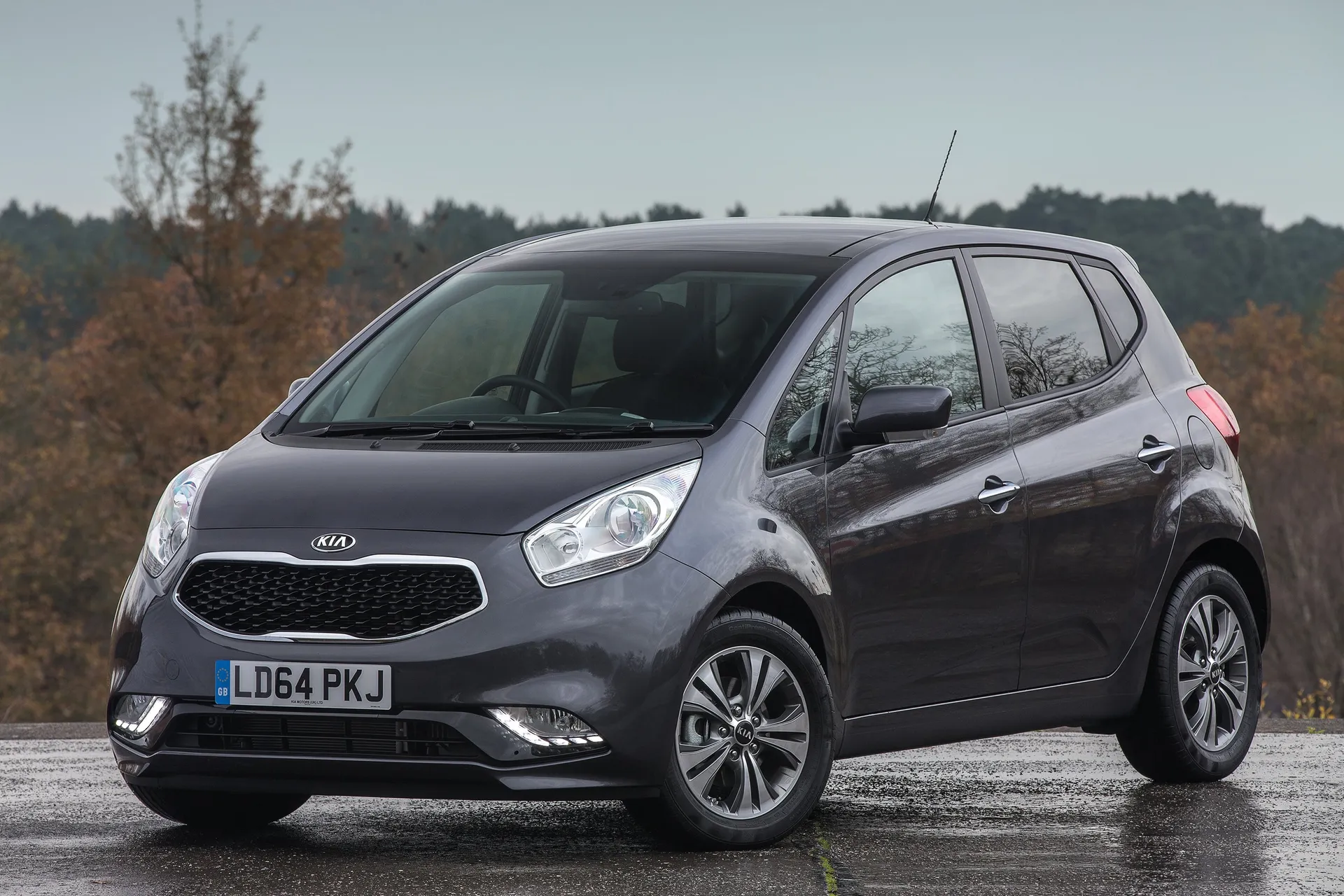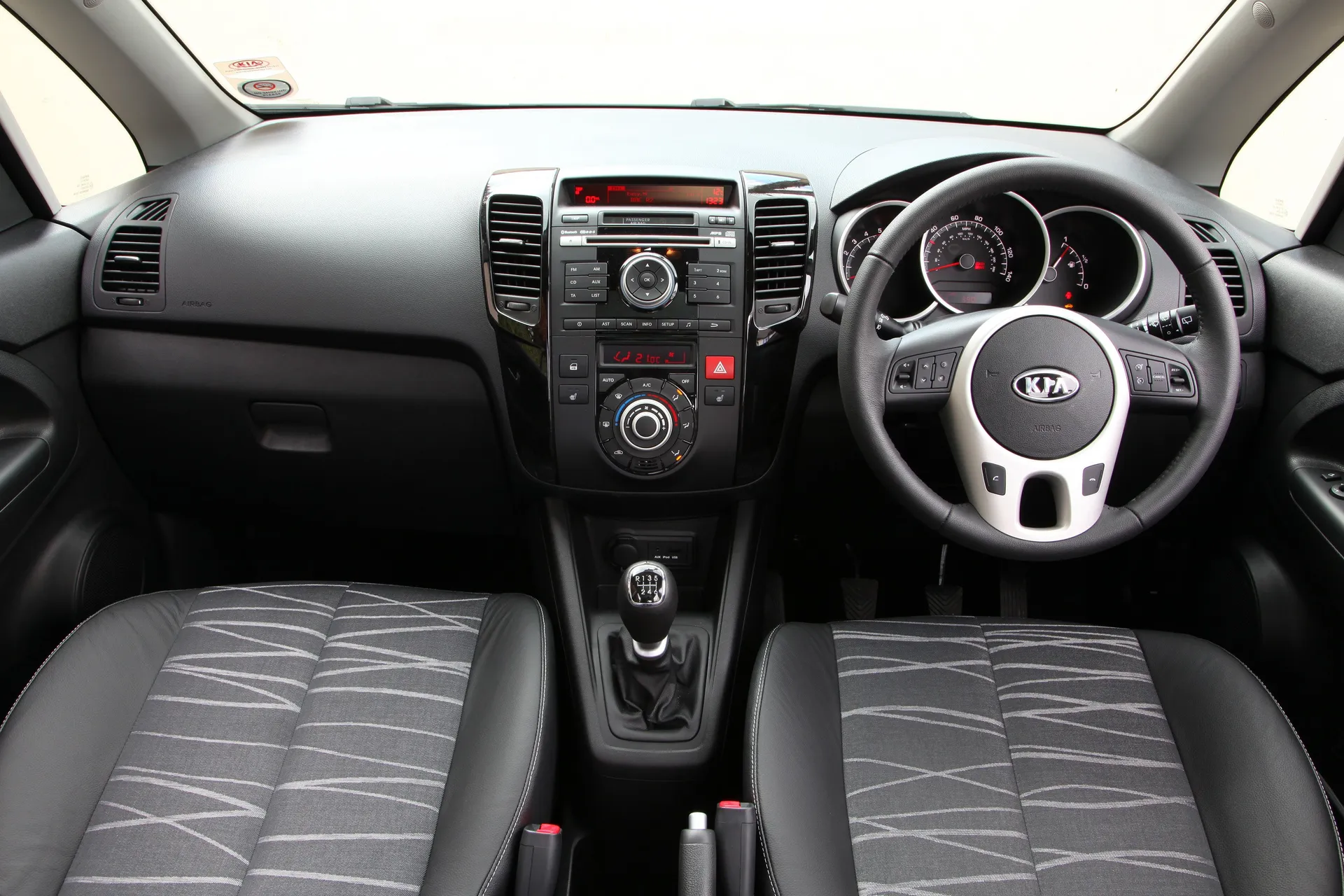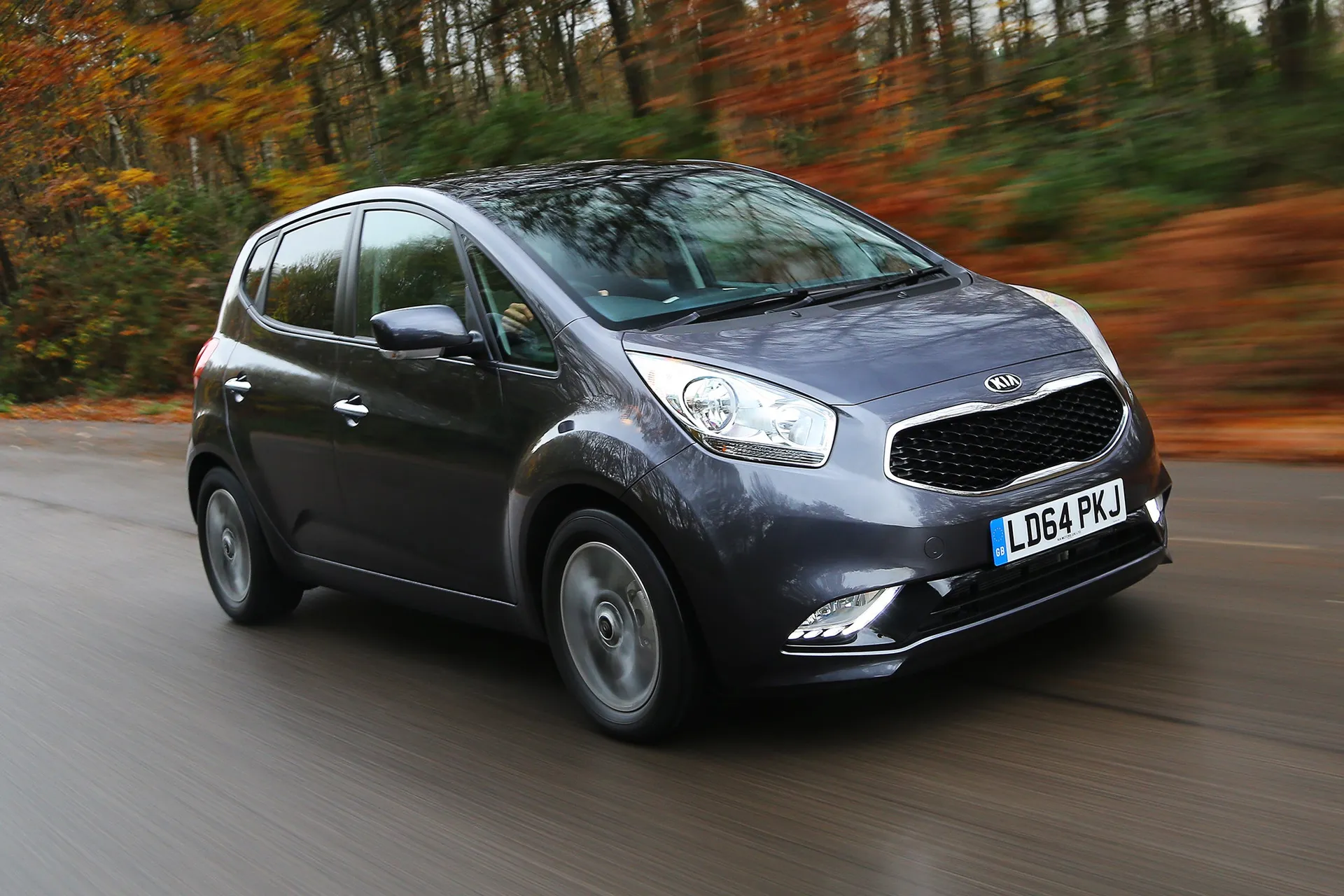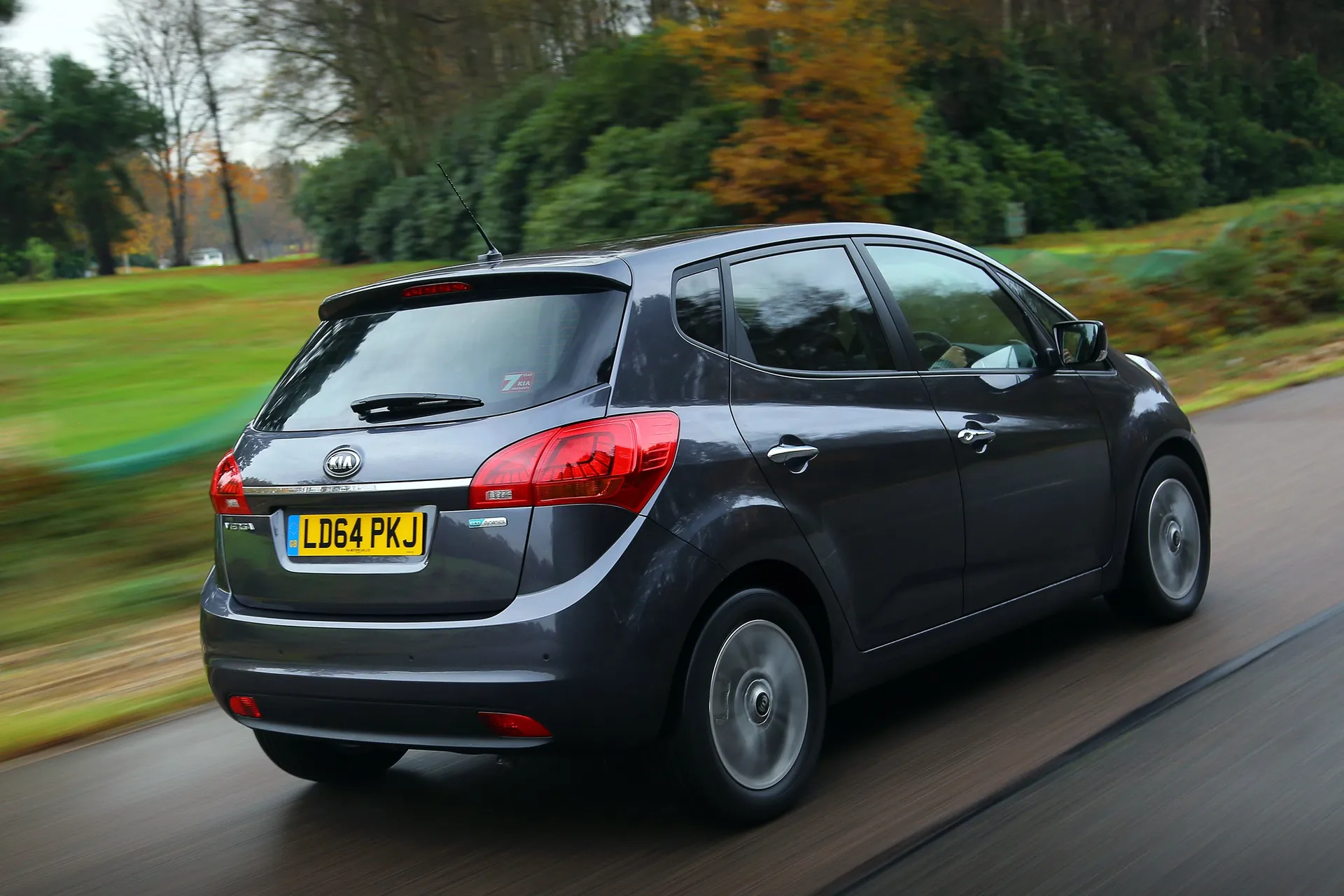Kia Venga (2010-2019) Review
Written by Andrew Brady
Quick overview
Pros
- Highly practical for a car this size
- Efficient diesel engines
- Good value for money
Cons
- No oil painting
- Interior offers little appeal
- Poor ride on badly-surfaced roads
Overall verdict on the Kia Venga
"As you'll soon discover in this Kia Venga review, the Venga is still an exceptionally sensible buy; there’s nothing frivolous about its design or execution, and is cheap to buy and run too. Even so, there are better options that provide a superior driving experience or are nicer to look at, so if these things matter to you then consider your options."

Few manufacturers have gone through the kind of revolution that Kia has over the last few years. Having started out selling lightly re-engineered cast-offs from other manufacturers that were big on value but low on everything else, the Korean brand has strong European links and some big names from the world of car design and engineering working on their products. The transformation has been remarkable.
The Venga is a product from the early days of this sea change but shows the willingness to think outside the usual templates to create a car that offers something that rivals do not.
First launched in 2010, the Venga was developed alongside a very similar product from sister brand Hyundai, although the ix20 that came from that brand was a slightly different machine in some important ways. Designed and sold as a mini-MPV, the Venga occupied roughly the same road space as a conventional small car, but thanks to the design it could offer far more interior space.
A quick look at the Venga’s exterior shows how this extra room has been liberated. The high roofline ran almost the length of the car, while the steeply raked, short bonnet and deep windscreen allowed more of the area within the cabin to be utilised. Still, the result is a car that won’t win your heart because of its good looks, but it might well win over your head in the process.
If you’ve got this far without walking away, the Venga may well be able to convince you. Step inside - which is exceptionally easy thanks to the big doors and high seating position - and it almost feels like you’re getting into a bigger car. The high roofline and generously sized windows play the biggest part here, boosting the feeling of space, but even in the rear where passengers usually get the roughest deal, there’s ample head and legroom available.
On the mechanical side, the Venga is more conventional, with a front-engine, front-wheel-drive layout. At launch in 2010 it was available with 1.4-litre and 1.6-litre petrol engines alongside 1.4-litre and 1.6-litre diesels with a choice of power outputs.
A five-speed manual gearbox was standard for most models, with a six-speed manual standard on the high-output 1.4-litre diesel and all 1.6-litre diesels. A four-speed automatic transmission was optional on the 1.6-litre petrol.
The Venga offered a driving experience that was perfectly serviceable, but not exceptional, nor quite as good as its Hyundai ix20 sibling. Sensibly biased towards comfort and economy rather than performance, the petrol engines were adequate while the diesels offered both better acceleration and fuel consumption. The ride quality was acceptable on most surfaces, but struggled on particularly broken roads, while the handling was safe and predictable, even if there was a good deal of body roll.
On balance, the Venga was spacious, good value and well-equipped. There was little to excite the eyes or the heart which made it rather sensible, although the fact the near-identical ix20 was better in some respects and may well be the better option.
Looking for a used car for sale? We've got 100s of Kia Approved Used Cars for Sale for you to choose from, including a wide range of Kia Venga cars for sale.
Is the Kia Venga right for you?
Generally speaking, if you needed a lot of space in your car, you would buy one that’s big enough, but the Venga allowed you the luxury of an interior closer to a car from the class above while still enjoying the running costs and physical road space of a smaller car.
It didn't really have the appeal that new drivers would be seeking from a small car, although if they also had a family it does make a lot of sense. For the frugally-minded or those with some mobility issues, the Venga's ability to swallow passengers and luggage with ease was surely tempting.
What's the best Kia Venga model/engine to choose?
Really, this depends on what you're looking for. Of course, you're reading this review which means you're not requiring a Porsche. There's no sour engine really, but the 90PS 1.4-litre diesel offers a mixed bag. There's also the 115PS 1.6-litre diesel.
If you're after something not powered by the devil's fuel, the 1.4-litre petrol gets our vote for affordability and performance.
What other cars are similar to the Venga?
No car is more similar to the Venga than the ix20 from partner company Hyundai. In many respects the ix20 was the superior machine - the ride quality was better and the interior design better resolved too - we’d recommend the Hyundai over the Kia.
The Vauxhall Meriva and Ford B-MAX are two other models that were similar in execution and design to the Venga, both being spun off existing small car platforms but with a greater emphasis on space and practicality. Both also had an unusual rear door arrangement - rear opening on the Meriva and sliding doors on the B-MAX - to improve access.
Comfort and design: Kia Venga interior
"It’s not until you experience a car like the Venga that you realise how easy a car can be to live with when the designers prioritise its occupants rather than giving too much time to looks or aerodynamics."

The Venga's cabin was built around offering as much space as possible and the roof line was higher than a car of this size usually had. The doors were large and open wide and the seating position was high too; all of this made it far easier than in most cars to climb aboard and get comfortable. All versions also had seat height adjustment and both reach and rake adjustment in the steering wheel, so getting a good driving position was possible for almost everyone.
The view out for the driver was very good, again helped by the design of the Venga’s cabin. The windscreen and side windows were large, allowing plenty of light in while making it much easier to see out. A smart design feature was the extra window ahead of the front doors and behind the windscreen pillar, which mitigated the fact that the steep rake of the windscreen could obstruct the driver’s view.
The layout of the cabin itself was sensible and clear, rather than particularly visually appealing. The audio system and ventilation controls were mounted high up on the dashboard where they could be easily reached, the instruments were large and clearly marked, and the steering wheel had the key controls added to it, rather than being swathed in buttons and switches. The design itself was a little less attractive than the comparable ix20 - not least because the Kia’s steering wheel was borderline unsightly.
Quality and finish
A significant indicator of the development of Kia as a brand is the rapid improvement in quality over the years, and the inside of the Venga demonstrated how far they had come. The relative conservatism of the design dates it to the early 2010s, but the quality was more than competitive with what the competition was delivering at the same time.
There was little colour to liven up the cabin though, with shades of black and grey dominating the experience other than the odd flash of silvered plastic on the dashboard and steering wheel. It’s a shame, because the Kia Soul, a car based on the same platform as the Venga and sharing much of its makeup, had numerous interior options and unusual design elements that added vibrance to the cabin.
That said, the quality of the materials was of a high standard compared to key rivals. There were some hard plastics in the cabin of course, but the key contact areas were pleasing to the touch. Even the less-impressive plastics at least feel solidly built, and a leather covering on the steering wheel and gear lever on most models was a welcome additional boost.
Infotainment: Touchscreen, USB, sat-nav and stereo in the Kia Venga
The standard infotainment provisions in the Venga consisted of a CD radio unit that included an AUX and USB input, with steering wheel controls also included. The standard fitment increased incrementally with each trim level with the SR7 adding Bluetooth, the 2 including an iPod connector and the 3 model upwards had the full-on 7-inch touchscreen with navigation.
Such is the speed of development in this field that a good deal of this technology is now almost redundant; the iPod connector and AUX input will hardly be at the top of most buyers' lists, whereas Bluetooth and USB are far more relevant.
While the basic provision in the Venga 1 model was adequate, choosing a 2 model ensured you had the means to connect and charge your smartphone, whichever type it was, and have the ability to stream music and answer phone calls hands-free. The higher-specification touchscreen system is now dated and doesn’t work as well as contemporary native smartphone apps.
Even the 2015 updated Venga didn’t increase the standard infotainment provision - it actually deleted the CD player on models where it was originally fitted.
Space and practicality: Kia Venga boot space
The reason to consider a Venga in the first place was because of how practical it was, which was arguably more so than any rival car. Sitting up front, you could appreciate how much room was created by the high roofline and the far-forward windscreen; the Venga felt like a car with space from the class above.
Head and legroom were excellent for front-seat passengers, even for those who were significantly over six feet tall, and perhaps even more impressively the rear seats were almost as generous in the amount of space offered. The roofline sloped downwards towards the rear of the car, so headroom wasn't quite as generous in the back but it was sufficient to carry an adult - you could get three across the back with a gentle squeeze, which few cars of this size from this era could realistically manage.
Although it was unlikely that family buyers needed to carry three adults on a regular basis, the ease with which the Venga could carry two child seats on the rear bench would've been genuinely useful to some families, with Isofix anchor points on the outside seats also.
Arguably it got even more impressive as you headed for the rear, where the Venga had a boot that shamed some significantly larger cars from the class above. The Kia Venga boot space was 440 litres with the rear seats in place, a remarkable 100 litres more than a Ford Focus or Volkswagen Golf from the same time.
The boot was easy to load thanks to a low loading lip, and the boot floor had a false bottom so you can divide up the space too. If you need to turn your Venga into a van, you could fold the rear seats to open up a massive 1,486 litres of space - that's only 14 litres off a modern Mercedes-Benz EQV SUV. It genuinely provided as much space as you could reasonably expect from a car that had this exterior size, and if interior space was your key priority it made a strong case for itself.
Kia Venga dimensions are 4075mm long, 1765mm wide and 1600mm tall.
Handling and ride quality: What is the Kia Venga like to drive?
"Few people would expect a car like this to be particularly focused on delivering an engaging driving experience or racing car grip. Although it is worthwhile noting that partner Hyundai took a different route in developing the suspension setup for its ix20 by bringing cars to the UK and testing them on the country’s particularly poor roads."

The Venga had a soft suspension set-up, designed to absorb lumps and bumps from poor road surfaces, and for the most part, it was successful; at lower speeds in towns and on minor roads, it did an acceptable job at filtering out most of the disruption.
Where the Venga fell down a little was on poor roads at higher speeds, such as country roads or motorways in a poor state of repair. Here it tended to float around or thump into bigger bumps as the suspension didn’t have the sophistication to cope with it. It was an irritation rather than a big issue, but it fell behind the ix20 in this respect.
In terms of handling, the Venga was acceptable rather than particularly exciting. The steering was well-weighted and sufficiently accurate, although there wasn't a huge amount of feedback to the driver. If you decided to hurry, the Venga did as it was asked by turning into corners obediently and with little fuss.
There was quite a lot of body roll, which was to be expected when the suspension was set up to be so soft and does tend to discourage this kind of behaviour, but this was a car with more grip and capability than almost all of its owners would ever need or want to explore. It was sufficient rather than fun, so if that’s what you’re after, look elsewhere."
What engines and gearboxes are available in the Kia Venga?
The Venga shared its engines and gearboxes with near-identical Hyundai ix20, although the exact offerings during the car’s lifetime were not exactly the same. At launch in 2010, the Venga was available with a 1.4-litre 90PS and 1.6-litre 125PS petrol, with the latter available with an automatic gearbox. A 1.4-litre diesel was also offered at launch with 90PS and 240Nm of torque, alongside a 1.6-litre diesel with 115PS.
Of the petrol options, the 1.4-litre provided adequate performance at best, while fuel consumption and emissions were on the high side given its intentions of being a cheap car to run.
It also required a fair amount of exercise to generate decent performance and became noisy in the process. The 90PS diesel was a more appealing option, however, as it had strong torque from low revs and was also pretty refined, with very little diesel clatter intruding. The 1.6-litre diesel offered very similar economy and emissions to the 1.4-litre (they were from the same family of engines) but had useful additional performance and, of the diesel options, is still the one to go for.
The 1.6-litre petrol was the thirstiest of the range, especially when fitted with the automatic gearbox. This was improved somewhat with later models, as post-2015 Vengas got a six-speed automatic rather than the four-speed version in early cars.
Refinement and noise levels
This was another area where sound development work had been undertaken by Kia, as the Venga provided a good level of refinement given it was a small and relatively inexpensive car.
Inevitably the diesel engine options generated a little more noise and vibration than the petrol equivalents, but there wasn't a great deal in it, and the driving experience and economy of the diesels more than made up for this. Once underway, there was little noise from any sources, and the Venga rolled along happily, insulating its passengers from outside disturbance.
At higher speeds, wind and road noise were inevitably more prevalent, but not dramatically so. This was still a pretty refined small car, even if rougher road surfaces did throw up an increased amount of tyre noise. It was good enough to make the Venga a viable long-distance car, although the taller body was a bit more susceptible to crosswinds than other conventional small cars of this size.
Safety equipment: How safe is the Kia Venga?
The Venga was tested by EuroNCAP when the car was first launched in 2010 and was not tested again before it was discontinued in 2019. However, it scored an impressive five stars overall, with a rating of 89 percent for adult protection and 85 percent for child protection. It also scored a reasonable 64 percent for pedestrian mitigation and a strong 71 per cent for safety assistance.
As standard, all Venga models were fitted with six airbags including front, side and curtain airbags for the front seat occupants, seatbelt pre-tensioners and load limiters, two Isofix mounting points in the rear outside seats as well as a seatbelt reminder. Although EuroNCAP’s report says that ESC is optional, UK specification cars were fitted with this as standard from launch.
Parking sensors were not fitted to Venga 1 models but were standard on SR7 models upwards. Following the facelift to the Venga range in 2015, additional safety equipment included tyre pressure monitoring as standard, automatic lights, cruise control and a speed limiter on higher-grade models.
What the Venga lacked was automated driver assistance features such as lane departure warning and automatic emergency braking.
All Venga models were fitted with a space saver spare wheel as standard, and although a full-size spare was available as an option it is unlikely that many used examples will have had this feature added.
MPG and fuel costs: What does a Kia Venga cost to run?
"The big-inside, small-outside approach pays dividends when it comes to running costs, even if the Venga’s bulbous exterior doesn’t obviously lend itself to fuel efficiency."

Of the petrol engine options, the 1.4-litre came with an official combined figure of 50mpg under the old NEDC rules, which should make 40mpg or more a reasonable expectation. The 1.6-litre petrol with petrol or manual gearbox options was far less impressive, with a combined figure of around 44mpg for the manual, so you should expect this to dip into the 30s in everyday use.
Inevitably either of the diesel options should be chosen to minimise fuel costs. The 1.4-litre and 1.6-litre diesel offerings claimed almost identical combined figures at around 64mpg, so either should be more than capable of achieving 50mpg in everyday driving and without too much effort.
Kia Venga reliability and warranty
The Kia Venga should be reliable. It was a relatively simple car and Kia grabbed the eighth spot in our sister website Honest John's list of the top ten most reliable car brands. You can also take heart from the fact that Kia offers an industry-leading seven-year/100,000-mile warranty.
Kia Venga insurance groups and costs
The Venga has quite a broad spread of insurance groupings depending on the engine and specification you choose, so it is worth spending a bit of time to consider the best option if your premiums are generally on the high side.
The lowest group model in the range is the 1.4-litre Venga 1, which drops into group 7. Move up to a 2 or 3-spec car with the same engine and this goes up to group 9, while the 1.4-litre diesel is in group 10 or 11 depending on which spec you choose. At the high end of the scale are the 1.6-litre petrol and diesel options - worst offended is the 1.6-litre diesel in 3 spec which falls into group 15 - eight groups higher than the 1.4-litre petrol Venga 1.
VED car tax: What is the annual road tax on a Kia Venga?
Like insurance, road tax can also be volatile depending on chosen trim. The cheapest is the model 4 1.6 CRDi ISG trim (31 March 2017 - 30 Jan 2018), which falls into Band G and costs £190 per year.
The most expensive cars to tax are the ones that reside in Band H and I. Band I's are some of the 1.6 2 six-speed automatics, meaning you'll pay £255 per year for cars registered between 2010 and 31 March 2017. For cars registered after April 1 2017, this increases to a whopping £680 for the first year and falls to £190 afterwards.
Kia Venga price
"Because it has been on sale for over a decade and has been a relatively high-value car throughout that time, it is a car that has proved popular with buyers and so used examples are quite easy to come by."

A quick search of the classifieds turned up quite a few results with cars starting from as little as £1,000. Most early models with semi-high mileage are priced from £2,500. If you're keen enough, you can spend just under £14,000 on a used Venga. Sure, that gets you a 15,000-mile 2019 example, but for an additional 17,600 miles on the odometer, you can have a car from the same year for £9,800.
Trim levels and standard equipment
The Venga’s trim levels - much like the rest of the Kia range - are easy to understand thanks to the simple numerical hierarchy. The basic 1 trim included useful essentials like electric front windows, plus USB and AUX inputs, but lacked air conditioning. There was a 1 Air trim that added air-con in, but it still lacked some basics.
SR7 or 2 trim levels should be the minimum requirement, as they had Bluetooth and reversing sensors, but we would suggest the 3 as the best spec in the range. As well as climate control, LED running lights and half-leather trim, you got heated front seats, a reversing camera and the 7-inch touchscreen system from the factory.
Ask the heycar experts: common questions
Why did Kia stop making the Venga?
Is the Kia Venga a big car?
Does the Kia Venga have a timing belt?
Get our latest advice, news and offers
Keep me updated by email with the latest advice, news and offers from heycar.
By submitting you agree to our privacy policy



